Ah, the lovely ripe pineapple! Its prickly skin hides a juicy treasure within, bursting with tropical goodness. But how can you tell if a pineapple is truly ripe and ready? Fear not, for I’m here to share simple secrets and tips on how to know if a pineapple is ripe.
How to pick a ripe pineapple
Quite often people ask when you should cut a pineapple. It’s best to cut a pineapple when it’s ripe. Follow these clues and you’ll know the perfect time to cut a pineapple, and using this guide on how to cut a pineapple you can do it most effectively.
1. Firstly, observe the top (the crown) to tell if a pineapple is ripe
Let’s begin at the top – the crown. A ripe pineapple will have vibrant, green leaves. Avoid those with mostly dry, brown, or wilted leaves. Sometimes the end of the leaves can have a slight bit of browning as a natural result of refrigeration and transportation and still be ripe.
A firmly attached crown also indicates freshness.
The crown shouldn’t feel like it could easily pull off with a weak tug or twist.
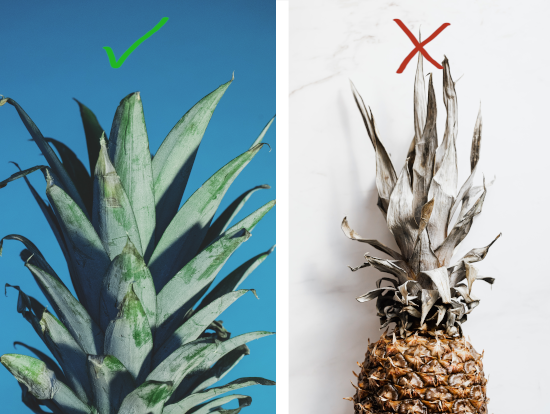
2. Check the color of the skin to see how fresh a pineapple is
Gently turn the pineapple to examine its color. A ripe pineapple should be mainly a golden or yellow color on the ‘eyes’ of the pineapple skin. Some may have a hint of green, but too much green means it’s not quite ripe.
Some other types of pineapple will also be mostly red on the skin when ripe, like the Red Spanish pineapple.
Watch out for brown or dark spots, as they may indicate overripeness.
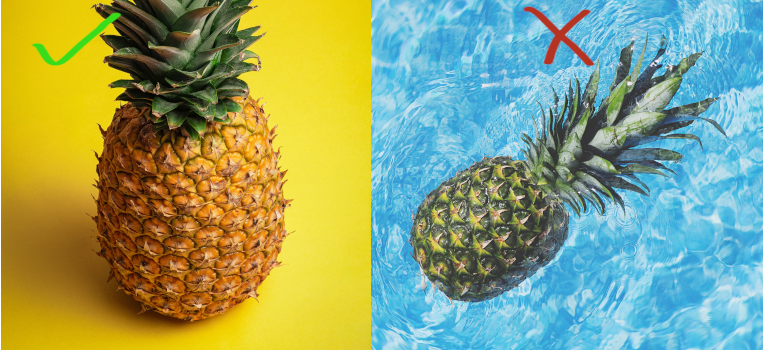
3. Gently squeeze the pineapple to feel if it’s ripe
A gentle squeeze reveals ripeness. A ripe pineapple should yield slightly but still feel firm. Avoid ones that are too soft or mushy, as they may be overripe. Too hard is likely still underripe.
4. Smell the base of the pineapple to check if it’s good
Last but definitely not least – follow your nose! Take a whiff at the pineapple’s base. A ripe pineapple will have a fragrant aroma, like a tropical paradise. Steer clear of ones with no scent or a sour smell, as they may not be fully mature or may have been sat for too long in storage.
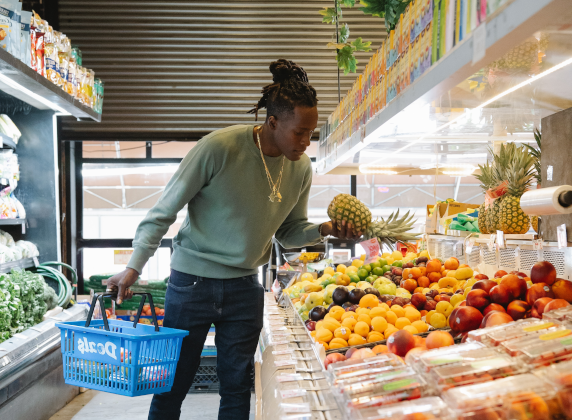
How to ripen a pineapple at home
Now, let’s explore simple tricks to ripen a pineapple at home if you want to save one to eat for later. A lot of people ask “will a pineapple ripen on the counter?” and the answer is yes but it mostly depends on the temperature (see tip 2. below).
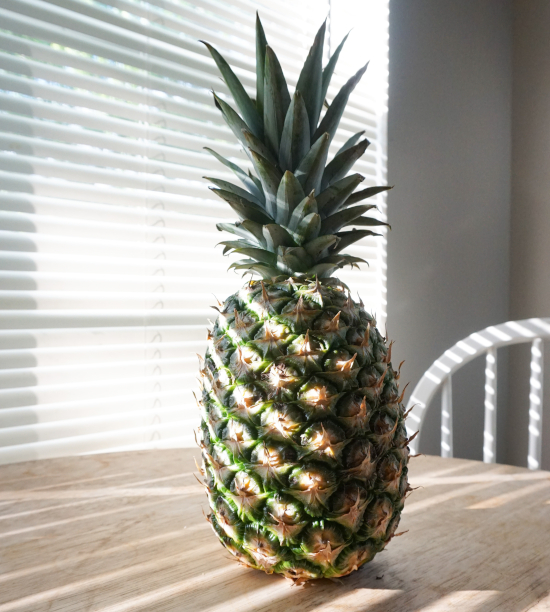
How do you ripen a pineapple quickly?:
- Choose the Right One: Select a pineapple with some yellow color. Green pineapples need time to ripen, but partially yellow ones have already started.
- Warmth is Key: Place the pineapple in a warm and sunny spot in your kitchen or near a window. The warmth helps speed up ripening.
- Turn It Upside Down: Gently flip the pineapple upside down to distribute natural sugars evenly. This can help expedite ripening. Turning a pineapple upside down to make it sweeter is a common thing, but it mainly works to distribute the juice and ripen the pineapple more evenly.
- Be Patient: It may take a few days for the pineapple to fully ripen. Keep an eye on it, and once it reaches your desired ripeness, it’s time to indulge!
- Store It Properly: If your pineapple has ripened perfectly but you’re not ready to enjoy it yet, store it in the refrigerator to slow down ripening. Place it in a plastic bag to keep moisture in and maintain freshness for a few more days.
Armed with this simple knowledge, you can confidently choose the perfect pineapple. Remember to observe the top, check the color, give it a squeeze, and sniff the sweetness. And if you’re feeling adventurous, try ripening a pineapple at home using warmth and patience.
Is a pineapple better white or yellow?
The general consensus is that the inside of a ripe pineapple should have a vibrant golden or yellow hue. The yellow color indicates that the pineapple has reached its full ripeness and is ready to be enjoyed and will likely be at its juciest.
A white pineapple will have more crunch and bite. A yellow pineapple slice will be juicier, sweeter and generally softer.
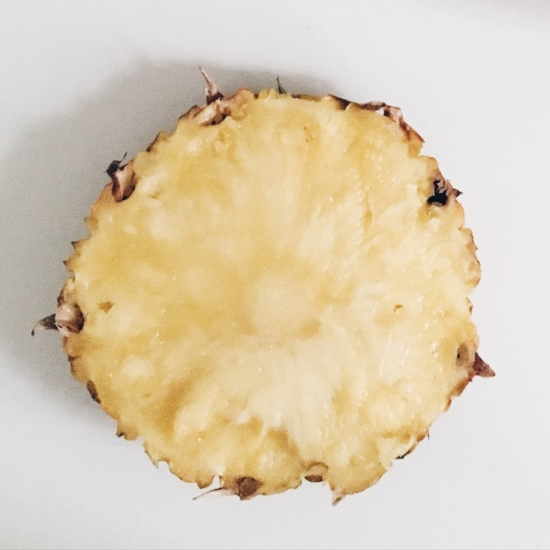
Some people may enjoy the slightly tangy flavor of a less ripe pineapple, while others prefer the sweeter taste of a fully ripe one. In the image above, you can see the pineapple slice has a mixture of the two. The left (yellow) side has a deeper concentration of juice. The right (white) side will be crunchier.
Ultimately, the choice between a white or yellow pineapple depends on personal preference. If you enjoy a sweeter and more pronounced flavor, look for pineapples that have developed a vibrant yellow color. However, if you prefer a slightly tangier taste, you can opt for pineapples that have a bit of green on their skin.
What does an overripe pineapple look like?
An overripe pineapple shows a few visual clues that indicate it is past its best. If you’re keeping an uncut pineapple sat on your counter, it’ll probably be good to eat fresh until you see a few of these signs. Here are some things to look out for:
- Excessive softness: when a pineapple is overripe, it will feel soft and mushy when gently squeezed. The flesh will lose firmness, and it might even look squishy or watery.
- Browing or dark spots: overripe pineapples tend to develop brown or dark spots on their skin. These show the fruit has started to deteriorate and may have begun to ferment.
- Faded or dull color: instead of vibrant golden or yellow hues that characterize a ripe pineapple, an overripe one might look pale, dull, or even brownish in color.
- Strong fermented odor: while a ripe pineapple has a sweet and fresh smell, an overripe one will often give off a strong, fermented odor. The scent can be sour or overly sweet, again, indicating decomposition has begun.
- Leaking juice: as a pineapple becomes overripe, it may begin to leak excessive juice or moisture. This can be seen in wet patches or puddles around the fruit.
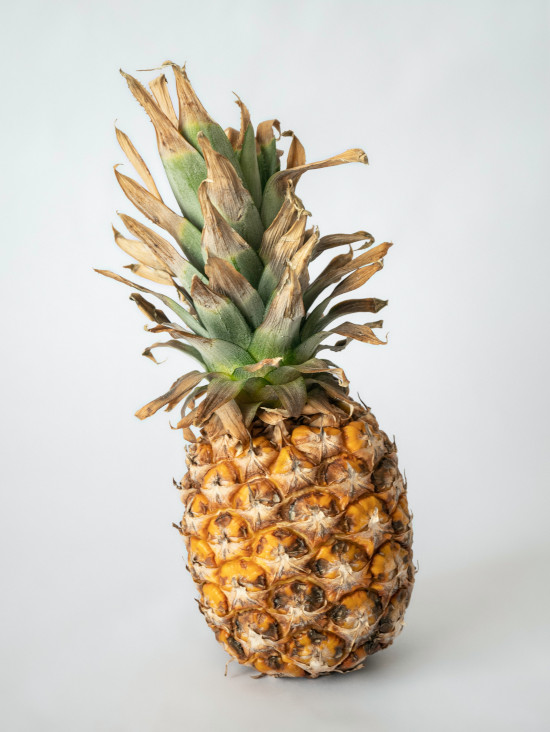
It’s important to know that while an overripe pineapple may still be safe to consume, its taste and texture might be very different. Overripe pineapples are generally best suited for cooking or as ingredients in sauces, jams, and smoothies.
With these tips in mind, feel free to grab a knife and savor the delights of a juicy, ripe pineapple. Enjoy it fresh, slice it for a tropical salad, or add its zesty flavor to your favorite recipes. The pineapple is sure to bring sunshine and flavor to your taste buds!
Title image credit: Any Lane from Pexels: https://www.pexels.com/photo/sliced-pineapple-on-wooden-board-5945749/

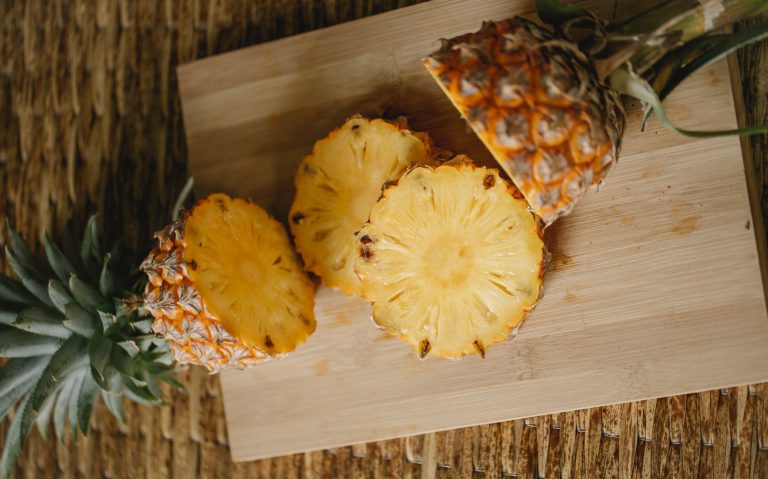
gud guide
IMO the leaves are always the best to show a ripe pineapple. Didn’t know it was called a crown!